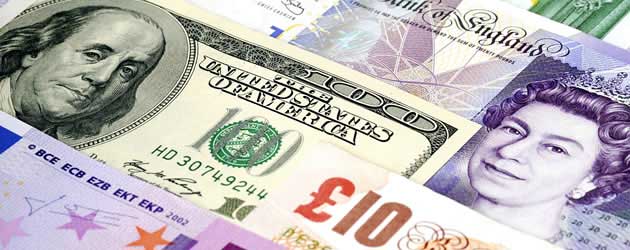Having softened following so-called ‘unjustified gains’ over the course of last week; the US Dollar once again surged after labour market data printed impressively on Friday. Confusion over the value of the ‘Buck’ (USD) has only fuelled the debate on when the Federal Reserve should hike the benchmark interest rate, and the US Dollar has softened against the majority of the higher-yielding currencies as a result. Similarly, the British Pound has softened on Monday after Business Secretary Vince Cable said that the high value of Sterling has hampered British economic growth.
The Pound Sterling to US Dollar exchange rate is currently trending in the region of 1.5981.
Demand for the Pound started to wane last week after Bank of England officials Ben Broadbent and Kristin Forbes suggested that Sterling’s value is adding to inflationary pressures. Friday saw yet more Sterling depreciation after economic data failed to meet with expectations. Of particular detriment was the declination outlined in the UK Services PMI, especially given that services account for a very large portion of the British economy.
Having enjoyed a sustained, bullish run the US Dollar softened over the course of last week. This was as a result of traders feeling that the gains were based purely on speculation regarding the timing of a Federal Reserve Rate hike and weren’t necessarily warranted by ecostats. Much better-than-expected labour market data on Friday, however, saw the US Dollar re-establish itself as a chart-topping currency. In particular the positive results from Change in Non-farm Payrolls and Unemployment Rate initiated the resurgence of ‘Greenback’ (USD) dominance.
The Pound Sterling to US Dollar exchange rate has hit a low today of 1.5956.
With a particularly sparse economic calendar on Monday, market volatility has been minimal. Given that there is only one solitary British domestic data publication (of little consequence in terms of weighting) the Pound has generally continued to trend lower following Friday’s disappointing results. New Car Registrations declined from 9.4% to 5.6% in September.
Adding to the Sterling downtrend were comments made by Business Secretary Vince Cable. Cable parroted Bank of England officials Ben Broadbent and Kristin Forbes in their opinion that an overvalued Pound is hindering economic progress and fuelling inflationary pressure. ‘Arguably, the Pound is overvalued by 10 to 15 percent on a trade-weighted basis,’ Cable told a side meeting at his Liberal Democrat party’s annual conference in Glasgow, Scotland. ‘This feeds back into monetary policy. It is a significant problem that we can’t directly address’.
A complete absence of US domestic data on Monday has initiated a cooling in the US Dollar. The currency was previously closing in on a four-year high against the Euro. Further losses are as a result of confusion surrounding the timing of a benchmark interest rate revision and the true valuation of the US Dollar. Lucy Meakin, writing for Bloomberg, said; ‘The Dollar weakened, pushing a gauge of its strength down from a four-year high, amid debate as to how soon the Federal Reserve will raise interest rates after a report last week showed jobs gains beat economists’ forecasts’.
Forecast for the Pound to US Dollar Exchange Rate
The GBP/USD exchange rate is likely to experience volatility on Friday after the British Gross Domestic Product estimate is published. British Industrial and Manufacturing Production data is also likely to initiate changes.
US Consumer Credit will be of interest to those invested in the ‘Buck’. Consumer Credit is forecast to decline from $26.006 billion to $20.000 billion.
The Pound Sterling to US Dollar exchange rate has reached a high today of 1.5990.
UPDATE
The Pound Sterling to US Dollar exchange rate is currently trending in the region of 1.6077.
Having softened on Monday amid confusion over the timing of a Federal Reserve Rate revision, the opposite has occurred on Tuesday for the same reasons. The unknowns concerning benchmark rate increases and the true justified value of the US Dollar has caused the exchange rate to fluctuate.
Sterling is holding in a low position as traders await the Gross Domestic Product estimate due for publication later on Tuesday.


